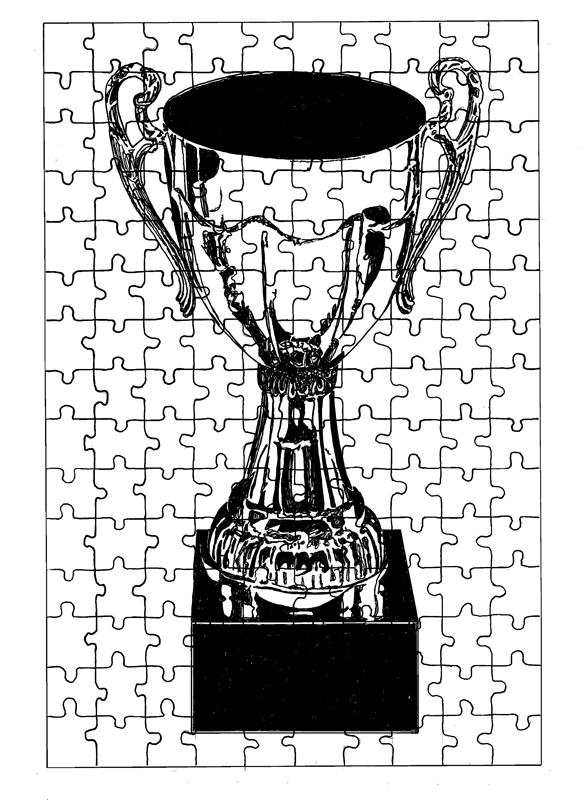‘I love his use of light and shade.’ As a child, I thought this one phrase was all art critics ever said. I have no idea where I got it from, but the idea delighted me in the same way that jokes about sex will delight one too young to understand them. There was the whiff of something scandalous about the suggestion, as if by repeating this I was puncturing some vast adult hypocrisy. I was reminded of this as I walked among the 16 vitrines of Art & Language’s new work Tell Me, Have You Ever Seen Me? II (2014). In each glass box sat two sheets of paper, one atop the other. The uppermost bore a detailed textual description, we are led to assume, of the portrait concealed beneath it, each one of a different significant contemporary political figure. These texts speak almost exclusively in terms of light and shade. So we hear about ‘a brightly lit patch over the upper eyelid of the right eye’ of Hugo Chávez, and of ‘a shadow on the right-hand side of the neck’ of Xi Jinping.
But this vast accumulation of detail, of light and darkness, blackness and white, obscures not only the images themselves. In concentrating so intently on the minutiae of shading, we neglect what is actually most apparent about the work: the grid of their arrangement, the names that make it up and the relationships (of power, influence, contiguity) between them. Hence Tony Blair finds himself with Rupert Murdoch on one side and Mahmoud Abbas on the other, Barack Obama to his left and Benjamin Netanyahu to his right. Is this painstaking detailing of highlights and shadow, then, supposed to be the work of the artist – a model of art obscuring art, or obscuring truth – or the critic? Am I being accused by this work in the same voice I once delighted in?
The covering up of images has been a part of Art & Language’s practice since their Secret Paintings of the late 1960s, black squares with a note informing the viewer of the existence of some hidden depiction within. It’s a part of the project they set out on the very first page of the first issue of the group’s journal Art-Language (1969), of ‘questioning the condition that seems to rigidly govern the form of visual art – that visual art remains visual’. For all that, over their near half-century, they have built a substantial catalogue of recognisable icons that are repeated among the drawings and sculptures in the Lisson show: from the percentages of their 1968 100% Abstract series to the trophies of their Lovely Slang paintings (1998–).
All these emerge, variously obscured, besmirched or cut up, across the Sea Ghost (2014) canvases, Drawings from the Winter (2012–13) and the installation Nobody Spoke (2013–14) that make up the rest of this exhibition. But if little here will surprise those familiar with the Art & Language oeuvre, the questions the group is asking – about art’s entrapment in the market, its complicity with power, its conceptual basis – are more urgent than ever.
This article was first published in the January & February 2015 issue.
